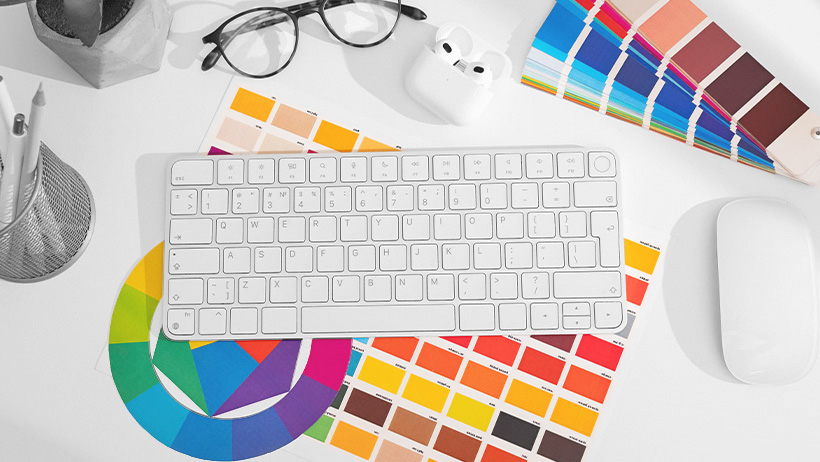Table of Contents
In the competitive world of branding and design, making a memorable impression on your audience is essential. One of the most effective tools at your disposal is color psychology—the study of how colors influence human behavior, emotions, and perceptions. In this post, we’ll dive into the fascinating realm of color psychology and show you how to use it to elevate your brand and captivate your audience. Let’s uncover the colorful secrets to branding and design success!

Color Psychology 101: The Science Behind the Spectrum
Before we dive into branding and design, it’s crucial to grasp the basics of color psychology. Research indicates that colors can evoke specific emotions and feelings, which can be harnessed to craft powerful and effective brand messages.
Harnessing the power of color psychology can transform your branding and design strategy.

Key principles of color phycology
- Warm colors (red, orange, yellow): Evoke feelings of energy, excitement, and passion.
- Cool colors (blue, green, purple): Often bring about feelings of calm, trust, and serenity.
- Neutral colors (white, black, gray): Convey sophistication, professionalism, and balance.
Understanding these principles helps you choose the ideal color palette for your brand, creating an emotional connection with your audience and shaping their perceptions of your products or services.
Color and Brand Identity: Crafting Your Unique Visual Signature
Your brand identity visually represents your company’s values, mission, and personality. Color plays a pivotal role in creating a memorable and cohesive brand identity that resonates with your target audience.
How to choose the right colors for your brand identity
- Reflect on your brand’s values, mission, and personality, considering how different colors align with these attributes.
- Research your competitors’ color schemes to identify opportunities for differentiation and avoid blending in.
- Test various color combinations and seek feedback from your target audience to ensure your chosen palette resonates with them.
The Emotional Impact of Color: Connecting with Your Audience on a Deeper Level
By leveraging color psychology, you can create an emotional connection with your audience that goes beyond the surface. The right color choices can evoke specific emotions, helping you build brand loyalty and trust.
Examples of color associations in branding:
- Red: Boldness, excitement, and passion (e.g., Coca-Cola, Netflix)
- Blue: Trust, reliability, and professionalism (e.g., IBM, Facebook)
- Green: Growth, nature, and sustainability (e.g., Starbucks, Whole Foods)
Consider the emotions you want your brand to evoke and choose colors that create a strong emotional connection with your audience.
Color Consistency: Reinforcing Your Brand Across Multiple Touchpoints
To create a memorable and cohesive brand experience, it’s vital to maintain color consistency across all touchpoints. Consistent use of your brand’s colors will reinforce your brand identity and make a strong visual impression on your audience.
Conclusion
Harnessing the power of color psychology can transform your branding and design strategy. By understanding the emotional impact of colors and their influence on human behavior, you can create a captivating brand that resonates with your audience and stands out in the competitive marketplace. Embrace the vibrant world of color psychology, and watch your brand come to life, forging lasting connections with your audience and propelling your business to new heights.
Ready to dive into the colorful world of branding and design? Start exploring the fascinating realm of color psychology today and unlock the potential for success within your brand’s unique visual signature. As you do, you’ll create a lasting impact on your audience and inspire others to embrace the power of color in their own branding endeavors.








